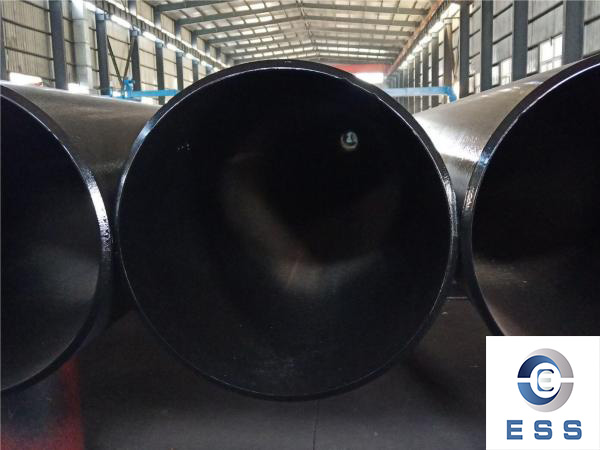ERW pipe flaw detection method
As one of the five conventional non-destructive testing methods, radiographic testing is widely used in industry. It is used for metal detection and non-metal detection. Defects that may occur inside metals (such as carbon steel pipes), such as pores, pinholes, inclusions, pores, cracks, segregation, lack of penetration, lack of fusion, etc., can be inspected by radiographic flaw detection. Application industries include special equipment, aerospace, ships, weapons, complete sets of hydraulic equipment and bridge steel structures, etc.

Pipeline flaw detection is a radiographic flaw detection method to check whether the internal quality of pipeline welds is qualified.
Radiographic testing (RT) of ERW pipe is a method that uses certain rays to penetrate the steel pipe to inspect the internal defects of the weld. Commonly used ray inspection methods include X-ray inspection, gamma ray inspection, high-energy ray inspection and neutron inspection. For commonly used industrial radiation detection, X-ray detection and γ-ray detection are generally used.
X-rays and γ-rays can pass through metal materials to varying degrees and produce photosensitivity to photosensitive film. Using this property, when the ray passes through the weld seam of the inspected ERW steel pipe, due to the different absorption ability of the weld seam defect to the ray, the intensity of the ray falling on the film is different, and its intensity and strength are different. Films also vary in sensitivity in order to accurately, reliably and non-destructively reveal the shape, location and size of defects.
1) The X-ray transillumination time is short and the speed is fast. When the detection thickness is less than 30mm, the sensitivity of displaying defects is high, but the equipment is complicated, the cost is high, and the penetration ability is smaller than that of gamma rays.
2) Gamma rays can transilluminate steel plates with a thickness of 300mm. No power supply is needed for transillumination, which is convenient for field work. It can be exposed at one time for circular joints, but the transillumination time is long, and it is not suitable for transillumination of components smaller than 50mm.
The basic principle of radiographic flaw detection:
When a ray beam with uniform intensity irradiates an object, if there are defects or structural differences in the local area of the object, the attenuation of the light by the object will be changed, so that different parts of the transmitted light will have different intensities. In this way, the intensity of the transmitted radiation is detected by a certain detector (for example, radiographic film is used for photography), so that the defects and material distribution inside the object can be judged.
Rays have radiation biological effects on the human body and endanger human health. During flaw detection operations, the relevant safety operating regulations should be followed and necessary protective measures should be taken. The working voltage of the X-ray flaw detector is as high as tens of thousands of volts or even hundreds of thousands of volts, so pay attention to the danger of high voltage during operation.













 Eastern Steel Manufacturing Co.,Ltd not only improve product production and sales services, but also provide additional value-added services. As long as you need, we can complete your specific needs together.
Eastern Steel Manufacturing Co.,Ltd not only improve product production and sales services, but also provide additional value-added services. As long as you need, we can complete your specific needs together.










